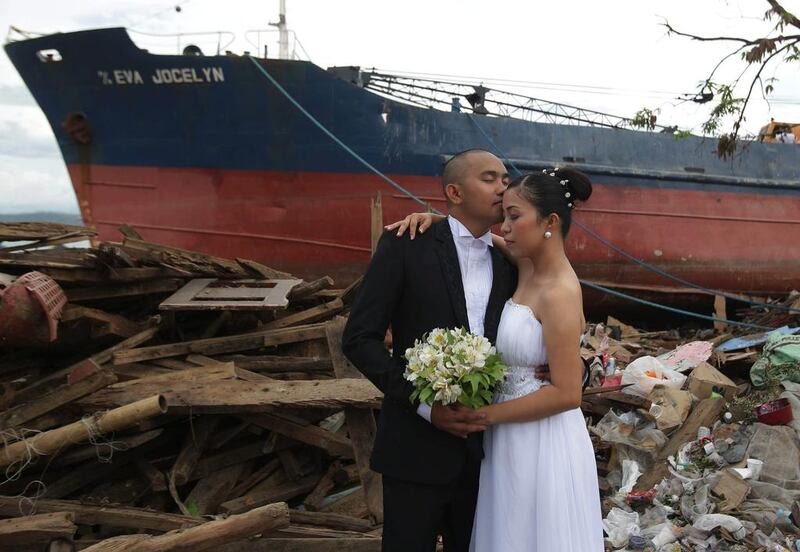TACLOBAN, Philippines // The government is back at work, and markets are laden with fruits, meat, fish and bread.
Shredded trees are sprouting new leaves.
Above all, the sounds of a city getting back on its feet fill the air: the roar of lorries hauling debris, the scrape of shovel along pavement, the ping of hammer on nails.
One month since Typhoon Haiyan, signs of progress in this shattered Philippine city are mixed with reminders of the scale of the disaster and the challenges ahead: bodies are still being uncovered from beneath the debris. Tens of thousands are living amid the ruins of their former lives, underneath shelters made from scavenged materials and handouts.
Tecson Lim, the city administrator, said a sense of “normality” has returned and has begun talking of a silver lining: “The opportunity to transform our city into a global city, a city that is climate change resilient and that can perhaps be a model.”
Rebuilding will take at least three years, and success will depend on good governance and access to funds. The Philippines is currently posting impressive economic growth, but corruption is endemic and the country remains desperately poor, with millions living in slums.
National and regional authorities had ample warnings and time to prepare before the storm hit early on the morning of November 8, but evacuation orders were either ignored or not enforced in a region regularly hit by powerful typhoons. Haiyan ploughed through Tacloban and other coastal areas, leaving more than 5,700 dead and more than 1,700 missing throughout the region. Some four million people were displaced.
But one couple in the town had other things on their minds Saturday.
Earvin Nierva and Rise El Mundo exchanged marriage vows at a church and then posed for photos in a hard-hit area of the city. “This gives hope to people that we can rise up,” said Ms El Mundo.
Pumping his fist, her new husband said, “Rise Tacloban!”
The storm, one of the strongest to hit land on record, triggered an international response, led by the United States and UN agencies.
The Philippine government has joined them in paying for food-for-work and cash-for-work emergency employment for thousands who lost their livelihoods. The workers clean up the twisted houses, trees and others debris that still cover large parts of the city and receive about 500 pesos (Dh42) a day.
On Friday, the World Bank approved $500 million (Dh1.84bn) in budget support that the Philippine government can use for short-term recovery and reconstruction. It is also providing technical assistance in designing housing, hospitals, schools and public facilities that can withstand super typhoons, strong earthquakes and severe floods.
Mr Lim, the administrator, said a development master plan soon to be completed calls for people living in areas prone to storm surges to be relocated farther inland. He said while some residents might resist moving from their former neighbourhoods, many others now were receptive to relocation after surviving the typhoon.
Rebuilding after the typhoon is a colossal work for an impoverished country that is still recovering from a recent earthquake that hit a nearby island and a Muslim rebel attack that razed houses in clashes in September in the south. Haiyan destroyed or damaged more than a million homes.
In Palo town near Tacloban, dozens of names of villagers who died were read in a memorial yesterday before Archbishop John Du celebrated Mass at a cathedral where the moon was visible through holes in the shattered roof.
Held to remember the dead and provide healing and closure, the ceremony was attended by survivors who recounted their tragic ordeals, including a Roman Catholic priest, who lost his mother and presided over her funeral Mass.
“We have lost so much of what we own,” the archbishop said. “But here, friends, we have never lost hope.”
* Associated Press





